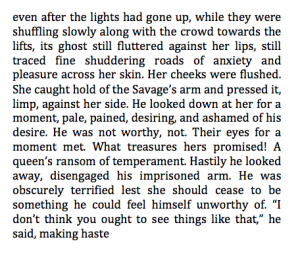…taking a holiday in the universe of matter…
Questions of Travel is a sonic travelogue inspired by two poems that chart different but interlinked journeys, created largely from recordings made on my own travels around the world. The first part, created specifically for this programme, draws on and uses fragments of the Elizabeth Bishop poem, Questions of Travel. The second, was the sound element of an audio-olfactory installation at the Institute for Art and Olfaction (2016, Los Angeles) and takes a sensuous journey through external to internal worlds using Charles Baudelaire’s La Chevelure as its guide.
Additional Creative Commons recordings used courtesy of Taira Komori, Andy Gardner, Glen Faramach and Panta Rei.
Jo Burzynska – who also works under the name Stanier Black-Five – is an Australasia-based sound artist and writer. Her audio work largely comprises soundscapes created by the manipulation of her own minimally processed environmental recordings. In a career that spans twenty years, she has recorded, exhibited and performed her works internationally. In recent years this has seen her make a number of sound releases, such as her CD album Avast! on Belgium’s Entr’acte label and Alone with the Black Spirits vinyl release on the UK’s Rail Cables; exhibit sound installations at Australasian galleries to Rome’s MAXXI; and perform shows and festivals around the world. In recent years her work has increasingly been created at the intersection of the senses; always using sound, but often combined with taste and olfactory elements. Also a writer and editor, she has contributed to specialist publications such as The Wire, and co-edits Australasia’s only sonic arts print publication, Writing Around Sound. She currently lives in Sydney, where she is researching sound and the multisensory for a PhD at the University of New South Wales.
More information about Jo and her work can be found at joburzynska.com
“(T)HERE” is one of a series of works I have made mediating electronic and acoustic sound to create imaginary spaces that nonetheless refer to an actual place. At the back of my garden there is a wall that at night reflects sound coming from the rubbish disposal operation centre some kilometres away. This piece is made entirely (with the exception of the two drones that come to prominence in the second half) from recordings made on the walk from my back room where I worked on it all the way down to the rubbish centre: traffic sounds, trucks loading, beeps and alarms, birdsong from blackbirds and currawongs, rain and insect sounds, reflected echoes from a distance etc. Many sounds are heavily granulated and pulverised to become abstracted noises with something of the original timbre preserved. The high pitched “strings” are concrete sounds put through filters tuned to the pitches present in the song of the blackbird. The basic pitches of the two drones in the piece are tuned to the birdsong as well. The basic idea of this and other environmentally derived works like it is to present and simultaneously disrupt this “tuning of the world”.
Keith W Clancy is a Melbourne-based composer, sound, video and installation artist. He currently studies sound at RMIT and was trained primarily in philosophy and fine arts some time late last century. His most recent work was “Corrective Services” for computer controlled organ and electronics performed on the grand organ of the Melbourne Town Hall (https://soundcloud.com/keith-w-clancy/corrective-services-for-organ-and-electronics-live-recording). He also performs and records long-form drone works under the name Wolftöne (https://wolftoene.bandcamp.com/).
 One night a friend of mine played me some digitised 78’s of early 20th century Weimar Tangos. They cried out to played with!
One night a friend of mine played me some digitised 78’s of early 20th century Weimar Tangos. They cried out to played with!
“The city had a jewel-like sparkle, the vast cafés reminded me of ocean liners powered by the rhythms of their orchestras. There was music everywhere.” Josephine Baker. Berlin 1925
DeadPeoplesRecords is a montage sound artist. He spends many hours scouring the forgotten corners of of the human condition searching for abandoned, redundant and ignored audio. DeadPeoplesRecords enjoys the relationship that the human voice has with recorded and transmitting mediums while flippantly celebrating the absurdity of the ordinary.
This is intended as an immersive participatory audio environment. Engaging in broadcast transmission means that each listener has their own unique auditory experience as a result of the sum of the environmental parts. For example, the sound reproduction technology (radio), the acoustic of the room it is situated within, the sounding activity and location of the “listener” as they interact with their physical space, the drifting in and out of focus as attention shifts from the listeners presence in the physical and the information from the transmission sounding device that aurally “colonizes” the physical space with its content. Bearing this in mind it is recommended that this piece be diffused at a reduced amplitude (low volume) so that divisions between the three environmental inputs: transmission media, ambient environment and participants sounding actions become blurred and result in a participatory immersive auditory event. This implies that the hermetically complete “work” no longer exists: The environment and the work can’t be distinguished.